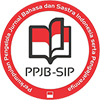ANALISIS GERAK DAN KARAKTER BUGIS PADA TARI HANDAGA BUGIS DI PURA MANGKUNEGARAN
Sari
This study uses an ethnochoreology approach with dance ethnography methods. Judging from its culture, the multicultural art form referred to in this case is described based on the background of the movements and characters. The results of this research show Bugis movements and characters are manifested in motion motives including slulupan, ngundhing mangundha, cekotan, kiteran, geyol, ikal benang, and pencak silat. The movements and characters of Bugis ngglece are formed by the motives of the ngundhing mangundha and slulupan movements. The movement and character of the gecul are formed by the motive motion of the geyol, kiteran, and ikal benang. The motion and character of ngece is formed by the motive penthangan laku miring cekotan, and ulap tawing cekotan. The movements and characters are agile, attractive, dynamic and strong are manifested in the movements of pencak silat which have been stylized into dance movement that gives the impression of a straight line, firm, and strong.
Keywords: Movement and Character, Bugis, Dance
Teks Lengkap:
PDFReferensi
Ed. Pramutomo, R. . (2007). Etnokoreologi Nusantara Batasan Kajian, Sistematika, dan Aplikasi Keilmuannya. ISI Press.
Morris, D. (2002). People Watching. Great Britain: Vintage.
Prabowo. (2007). Sejarah Tari Jejak Langkah Tari di Pura Mangkunegaran. Surakarta: ISI Press dan Percetakan CV. Efek Design.
Selamet, M. (2014). Barongan Blora Menari di atas Politik dan Terpaan Zaman. Citra Sains.
Soedarsono, R. M. (1997). Pengantar Pengetahuan dan Komposisi Tari Yogyakarta (Metodologi). Masyarakat Seni Pertunjukan Indonesia.
Soedarsono, R. M. (2002). Seni Pertunjukan Indonesia Di Era Globalisasi. UGM Press.
Ventresca. (2002). Archival Research Methode. Blackwell Publisher.
DOI: https://doi.org/10.33387/tekstual.v21i2.7100
Refbacks
- Saat ini tidak ada refbacks.
Tekstual terindeks oleh:



